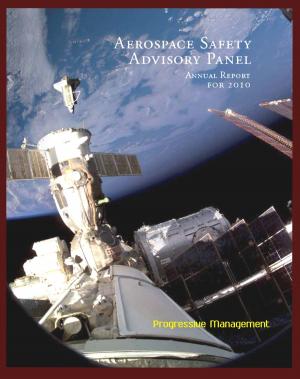The Agency and the Hill: CIA's Relationship with Congress, 1946-2004 - Central Intelligence Agency (CIA) Intelligence Papers
Nonfiction, Social & Cultural Studies, Political Science, International| Author: | Progressive Management | ISBN: | 9781465707628 |
| Publisher: | Progressive Management | Publication: | March 10, 2012 |
| Imprint: | Smashwords Edition | Language: | English |
| Author: | Progressive Management |
| ISBN: | 9781465707628 |
| Publisher: | Progressive Management |
| Publication: | March 10, 2012 |
| Imprint: | Smashwords Edition |
| Language: | English |
This is a study of the CIA's relationship with Congress. It encompasses the period from the creation of the Agency until 2004—the era of the DCIs. When Congress created a new position in December 2004—the director of national intelligence—to supersede the director of central intelligence (DCI) as head of the US Intelligence Community, it necessarily changed the dynamic between the CIA and the Congress. While the director of the Agency would continue to represent its interests on Capitol Hill, he or she would no longer speak as the head of US intelligence. While 2008 is too early to assess how this change will affect the Agency's relationship with Congress, it is safe to say it will never be quite the same. Contents: Part I - What the Relationship Was Like - Part II - What the Relationship Produced * The Nature Of The Relationship, 1946-76 * The Relationship: 1976-2004 * Intelligence-Sharing And Other Interaction * Organizational Arrangements At The Cia * Legislation * Program And Budget * Oversight Of Analysis * Oversight Of Collection * Oversight Of Covert Action * Oversight Of Security And Personnel Matters * The Senate Confirmation Process
This study is not organized as one might expect. It does not describe what occurred between the Agency and Congress in chronological order nor does it purport to describe every interaction that occurred over the period encompassed by the study. Rather it attempts to describe what the relationship was like over time and then look at what it produced in seven discrete areas.
The study is divided into two major parts. Part I describes how Congress and the Agency related to each other over the period covered by the study. As it happens, this period conveniently breaks down into two major segments: the years before the creation of the select committees on intelligence (1946-76) and the years after the creation of these committees (1976-2004). The arrangements that Congress put in place during the earlier period to provide oversight and tend to the needs of the Agency were distinctly different from those put in place in the mid-1970s and beyond. Over the entire period, moreover, the Agency shared intelligence with the Congress and had other interaction with its members that affected the relationship. This, too, is described in part I.
Part II describes what the relationship produced over time in seven discrete areas: legislation affecting the Agency; programs and budget; oversight of analysis; oversight of collection; oversight of covert action; oversight of security and personnel matters; and the Senate confirmation process. It highlights what the principal issues have been for Congress in each area as well as how those issues have been handled.
This unique paper was produced by the Center for the Study of Intelligence. CSI was founded in 1974 in response to Director of Central Intelligence James Schlesinger's desire to create within CIA an organization that could "think through the functions of intelligence and bring the best intellects available to bear on intelligence problems." The Center, comprising professional historians and experienced practitioners, attempts to document lessons from past operations, explore the needs and expectations of intelligence consumers, and stimulate serious debate on current and future intelligence challenges.
To support these activities, CSI publishes Studies in Intelligence, as well as books and monographs addressing historical, operational, doctrinal, and theoretical aspects of the intelligence profession. It also administers the CIA Museum and maintains the Agency's Historical Intelligence Collection.
This is a study of the CIA's relationship with Congress. It encompasses the period from the creation of the Agency until 2004—the era of the DCIs. When Congress created a new position in December 2004—the director of national intelligence—to supersede the director of central intelligence (DCI) as head of the US Intelligence Community, it necessarily changed the dynamic between the CIA and the Congress. While the director of the Agency would continue to represent its interests on Capitol Hill, he or she would no longer speak as the head of US intelligence. While 2008 is too early to assess how this change will affect the Agency's relationship with Congress, it is safe to say it will never be quite the same. Contents: Part I - What the Relationship Was Like - Part II - What the Relationship Produced * The Nature Of The Relationship, 1946-76 * The Relationship: 1976-2004 * Intelligence-Sharing And Other Interaction * Organizational Arrangements At The Cia * Legislation * Program And Budget * Oversight Of Analysis * Oversight Of Collection * Oversight Of Covert Action * Oversight Of Security And Personnel Matters * The Senate Confirmation Process
This study is not organized as one might expect. It does not describe what occurred between the Agency and Congress in chronological order nor does it purport to describe every interaction that occurred over the period encompassed by the study. Rather it attempts to describe what the relationship was like over time and then look at what it produced in seven discrete areas.
The study is divided into two major parts. Part I describes how Congress and the Agency related to each other over the period covered by the study. As it happens, this period conveniently breaks down into two major segments: the years before the creation of the select committees on intelligence (1946-76) and the years after the creation of these committees (1976-2004). The arrangements that Congress put in place during the earlier period to provide oversight and tend to the needs of the Agency were distinctly different from those put in place in the mid-1970s and beyond. Over the entire period, moreover, the Agency shared intelligence with the Congress and had other interaction with its members that affected the relationship. This, too, is described in part I.
Part II describes what the relationship produced over time in seven discrete areas: legislation affecting the Agency; programs and budget; oversight of analysis; oversight of collection; oversight of covert action; oversight of security and personnel matters; and the Senate confirmation process. It highlights what the principal issues have been for Congress in each area as well as how those issues have been handled.
This unique paper was produced by the Center for the Study of Intelligence. CSI was founded in 1974 in response to Director of Central Intelligence James Schlesinger's desire to create within CIA an organization that could "think through the functions of intelligence and bring the best intellects available to bear on intelligence problems." The Center, comprising professional historians and experienced practitioners, attempts to document lessons from past operations, explore the needs and expectations of intelligence consumers, and stimulate serious debate on current and future intelligence challenges.
To support these activities, CSI publishes Studies in Intelligence, as well as books and monographs addressing historical, operational, doctrinal, and theoretical aspects of the intelligence profession. It also administers the CIA Museum and maintains the Agency's Historical Intelligence Collection.















